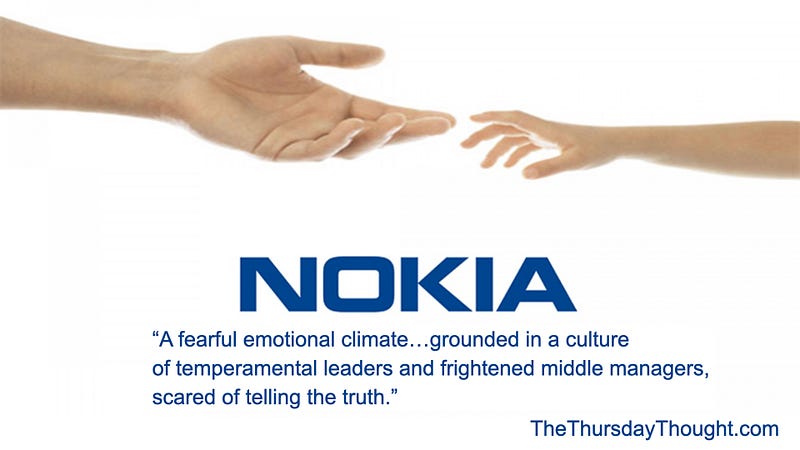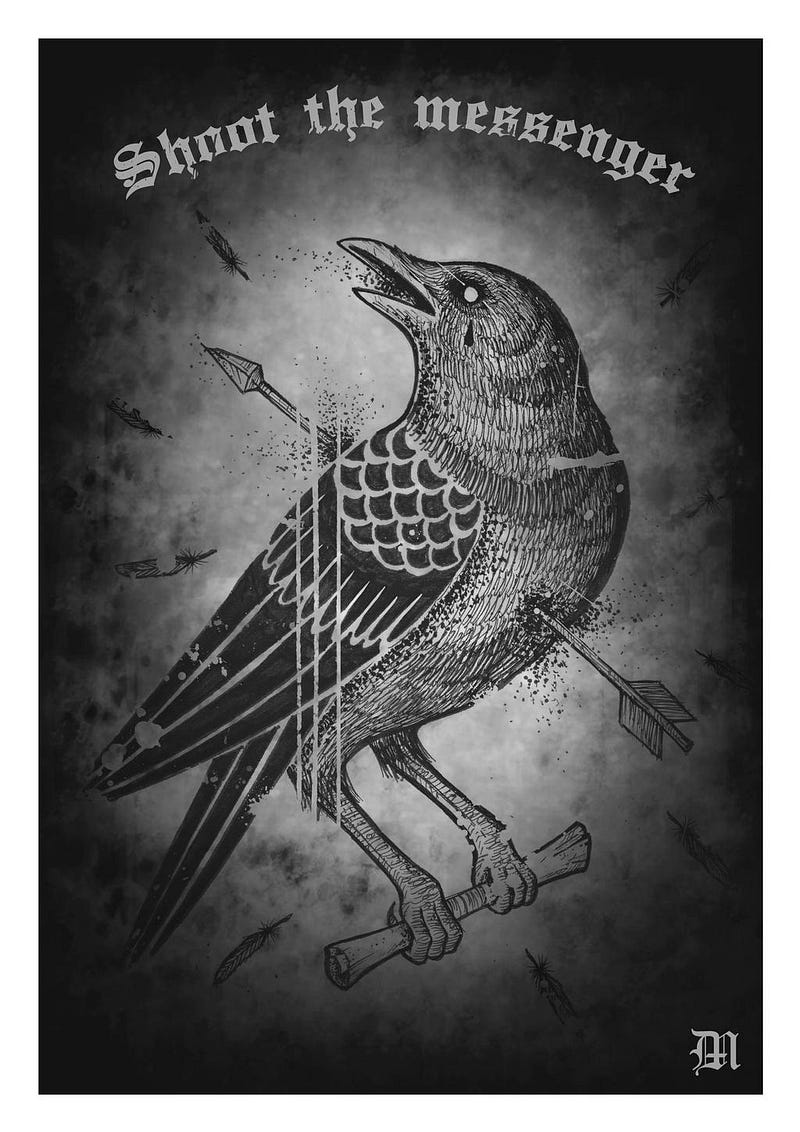
“Whatever you do in life, surround yourself with smart people who’ll argue with you.” — John Wooden
In 1997, Korean Air Flight 801 crashed while on approach to an airport in Guam, killing 225 of the 254 on board. In 2013, Asiana (also a Korean airline) Airlines Flight 214 crashed after clipping a seawall during a landing attempt at San Francisco International Airport, killing two and injuring 180 of 307 passengers. As an investigator, what would you look for in both crashes? What might be the common denominator? Typically, we would assume mechanical malfunction, weather issues or pilot error. What if the unlikely culprit of these crashes lay in culture?
In ‘Outliers’, Malcolm Gladwell dissects this question in a chapter called “The Ethnic Theory of Plane Crashes.” He said in a CNN interview: “The single most important variable in determining whether a plane crashes is not the plane, it’s not the maintenance, it’s not the weather, it’s the culture the pilot comes from.” Gladwell said hierarchy and never questioning your superiors is part of the Korean culture, underpinned by respect for seniority and an authoritarian business style. Dubbed as poor “cockpit culture”, the junior crew members were afraid to speak up. In the Korean air crash, the co-pilot was so intimidated by “speaking up” to air traffic control, he could not bring himself to tell them the plane was running out of fuel, and so the aeroplane crashed.
When I share this tale in my corporate culture workshops, I ask participants for their reactions? Responses vary from “The stupidity of the situation”, to “How could they let it happen, especially over something so stupid as fear of speaking up?” Too often, the response is sadly, “I get it.” Now, let’s substitute the cockpit with the corporate environment.
Corporate Cockpits

In the Korean air flight, the co-pilot knew they were in danger, but culture and hierarchy prevented him from speaking up. In many organisations, this is exactly the case. Nokia is the subject of many case studies in disruption and failure to adapt to changing market conditions. However, like so many case studies in corporate decline, organisational culture played a major role.

Another question I ask participants in my workshops is, what were the contributing factors to Nokia’s fall. Responses vary from a lack of innovation, to complacency because of their dominant position to inferior products to Apple’s iPhone. Yes, some of these factors played a role. However, comprehensive investigations, including interviews with 76 managers and engineers, reveal that executives operated in a culture of fear. As we discuss on the recent Innovation Show with neuroscientist Friederike Fabritius, in a climate of fear, our prefrontal cortex shuts down and we release cortisol, a stress hormone that literally makes our brains shrink. The problem is that our decision-making ability is on the decline when we have fear. A fearful emotional climate was a major component in the fall of Nokia. Nokia’s top managers had a terrifying reputation and made middle managers afraid of disappointing them. Top management was regularly lied to and fearing the reactions of top managers, middle managers remained silent or provided optimistic, filtered information. Even consultants, who worked with the company reported it was very difficult to tell them things they didn’t want to hear. If this sounds like your organisation, you may be subject to The Mum Effect.
The Mum Effect — Shooting the Messenger

“No one loves the messenger who brings bad news.”
― Sophocles, Antigone
Imagine your boss gives a speech, she thinks she nailed it, it couldn’t have gone any better. Meanwhile, you sat in the audience and overheard many people say it was a poor speech. Do you tell her?
Imagine your department launches a new product. Sales figures are less than expected. You fear you will fall short of quarterly projections. Do you tell your boss now or do you try to make up for the projected loss?
Imagine you believe your friend’s partner is being unfaithful. You have ample evidence, do you tell him?
These are all examples of the MUM effect. (Discussed on the Innovation Show with the author of Never Go With Your Gut, Dr. Gleb Tsipursky.)
The term stems from the term keep mum. (idiomatic) which means to remain silent about something that may be sensitive or secret. The Mum Effect refers to the reluctance to relay negative information for fear of negative consequences. Often the bearer of bad news — even when they aren’t responsible for it — is blamed and has negative feelings directed toward them. This is also known as shooting the messenger. It is a major killer to effective organisations as we saw with Nokia, as happened with Volkswagen Dieselgate and as happens in organisations all over the globe. This may be relevant in your organisation, can you share bad news quickly? Now remember, when you point the finger there are 3 pointing back at you. When someone delivers bad news to you, news you don’t want to hear, do you blame them or thank them?
The “Mother of Psychological Safety,”, Amy Edmondson on Innovation Show 189. Amy defined psychological safety as “The belief that the workplace is safe for safe for interpersonal risks, like asking questions, offering a half-baked idea, admitting a mistake and so forth. Psychological safety is a belief that asking questions, speaking up with ideas, admitting mistakes will not be punished, but will be valued by my colleagues. In a VUCA environment, if we don’t have everybody employed as sensors, everybody is present to be alert to what’s really going on then we’re in trouble.”
We are in a period of chaos, where we will make mistakes as we innovate, iterate and reinvent our way back to a new normal. In such an environment, our colleagues must feel psychologically safe. We will need all our energy to emerge from the Covid-19 chaos. We do not have excess energy to waste on fighting internal battles or to tip toe around over sensitive colleagues concerned about losing face. We must foster an organisational environment where we can discuss the good news as easily as the bad. In a business environment in flux, we need everyone in our organisations to be watchful messengers, sensors to rapid change.
THANKS FOR READING
We had two episodes on this week’s Innovation Show:
Episode 211 is “Never Go with Your Gut: How Pioneering Leaders Make the Best Decisions and Avoid Business Disasters (Avoid Terrible Advice, Cognitive Biases, and Poor Decisions) with author Dr. Gleb Tsipursky.”
Gleb is a leading expert on avoiding business disasters and draws on over 20 years of extensive consulting, coaching, and speaking experience to show how pioneering leaders and organisations — many of them his clients — avoid business disasters.
We discuss the various biases and heuristics that hold us back from effective decision making.
You can find out more about Gleb here: https://disasteravoidanceexperts.com
Episode 211 is The Neuroscience of Fear. In this bonus episode, neuroscientist and author of “The Leading Brain”, Friederike Fabritius shares how fear makes us think less effectively and changes both our physiology and our neurochemistry.
More about Friederike https://www.fabulous-brain.com
Have a listen:
Soundcloud https://lnkd.in/gBbTTuF
Spotify http://spoti.fi/2rXnAF4
iTunes https://apple.co/2gFvFbO
Tunein http://bit.ly/2rRwDad
iHeart http://bit.ly/2E4fhfl